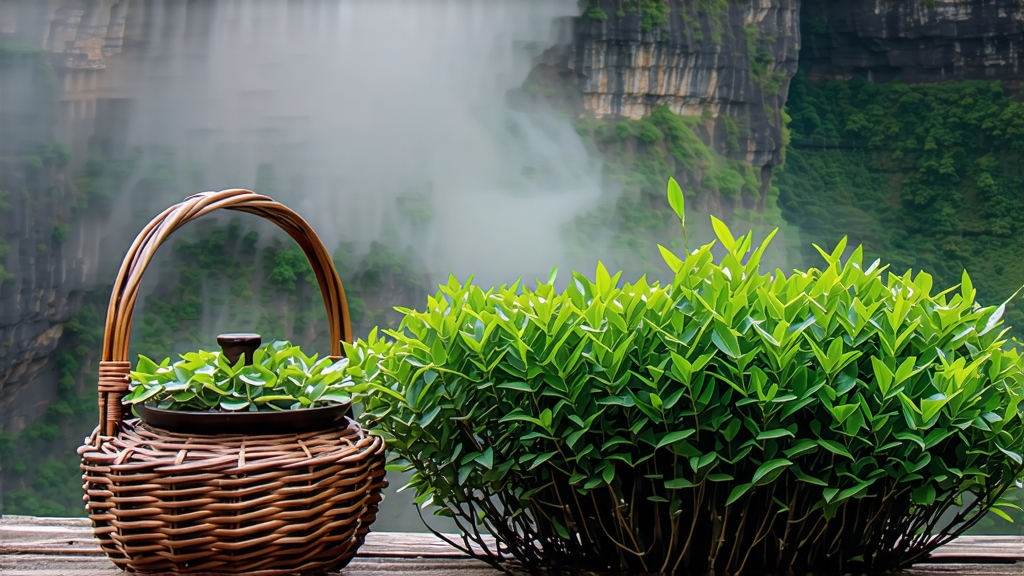
If every tea tells a story, Lapsang Souchong whispers the earliest chapter of black tea. Born in the precipitous Wuyi Mountains of northern Fujian, this rugged leaf was the first to be fully oxidised, the first to travel across the high seas to Europe, and the first to earn the name “black” in the West. Today, when drinkers from Moscow to Manhattan cradle a malty, cocoa-laden cup, they are tasting a lineage that began in the late Ming dynasty with a farmer’s accidental encounter between fresh leaf and pine fire.
History: From Ming War Camps to London Drawing Rooms
Local legend fixes the birth year around 1568, when retreating Ming soldiers commandeered a tea factory near Tongmu village. To dry the leaf quickly before the enemy arrived, workers spread it over pine fires. The smoke impregnated the tea, turning the accidental batch into an export novelty. Dutch traders christened it “bohea,” a corruption of “Wuyi,” and by 1604 the first chests reached Amsterdam. Within decades, Lapsang Souchong eclipsed green tea in London auctions, financed the East India Company’s early fortunes, and inspired the Duchess of Bedford to invent afternoon tea. The original smoking technique—still practiced in tiny Tongmu hamlets—thus shaped global taste preferences and, indirectly, the colonial tea economy.
Terroir: Why Only Wuyi Can Birth Authentic Souchong
The Wuyi range is a UNESCO geopark of vertical cliffs, mineral-rich igneous rock, and a subtropical monsoon climate that traps fog until noon. Tea gardens sit at 600–1,200 m, where diurnal temperature swings slow leaf growth, concentrating polyphenols and volatile aromatics. The soil’s high quartz and low pH forces roots to struggle, yielding tiny, thick leaves that withstand smoking without collapsing. Outside this 60 km² core, farmers may mimic the process, but the cup lacks the signature longan-sweet finish and cooling menthol top-note that connoisseurs call “yan yun” or rock rhyme.
Varieties: Smoked, Unsmoked, and the Jin Jun Mei Revolution
- Traditional Lapsang Souchong (Zhengshan Xiaozhong): Leaf harvested from the original Xingcun Xiaozhong cultivar, withered over local Masson pine fires, then pan-fired and rolled before a final 6–8 h smoke-drying. The result is glossy, strip-shaped leaves smelling of campfire and dried longan.
- Unsmoked Zhengshan: Same cultivar and oxidation, but dried with hot air in bamboo baskets; the cup is honeyed, stone-fruit sweet, and closer to a Dian Hong in profile, yet retains Wuyi minerality.
- Jin Jun Mei (“Golden Beautiful Eyebrow”): A 2005 innovation using only buds picked in late April. They are oxidised in bamboo trays heated by charcoal embers, never touching smoke. The liquor is amber-gold, briskly floral, with notes of caramelised peach and a lingering cacao finish. Though technically a Souchong offshoot, its price often rivals silver-tip white teas.
Craft: The Eight Stages That Trap Smoke in Leaf
- Plucking: One bud plus two leaves, 5–7 cm long, picked before 10 a.m. when dew still guards against breakage.
- Withering: Leaves are laid 3 cm deep on bamboo screens set over pine-fired troughs (28–30 °C). Moisture drops to 60 % while leaves absorb resinous volatiles such as α-pinene and longifolene.
- Rolling: A 45-min mechanical knead ruptures cells, releasing catechins and enzymes that will oxidise into theaflavins and thearubigins.
- Oxidation: Rolled leaf rests in pine-wood crates for 3–4 h at 24 °C and 85 % humidity. The pile is turned every 30 min to ensure even browning.
- Pan-firing: Quick 220 °C stir-fry for 3 min deactivates enzymes, locking in colour and maltol.
- Re-rolling: Tightens strips and squeezes out residual moisture.
- Smoke-drying: The critical signature. Leaves are spread on multi-tiered bamboo racks inside a qinglong (“green dragon”) oven. Below, pine logs